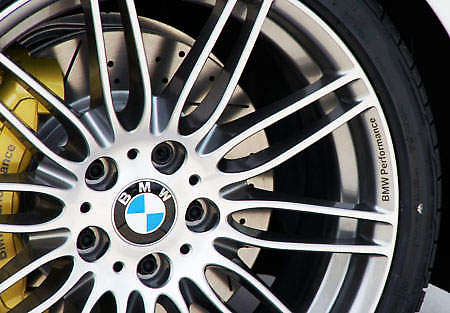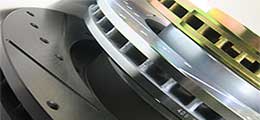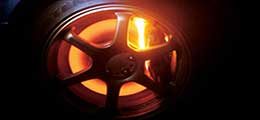
*source: sbcautocenter.com
Inspecting your brakes on a regular basis is a great habit to develop. Most experts advise a check up or maintenance of the brakes twice or more a year or if possible, every 30,000 miles. This is because continuous use of worn brakes will likely cause extra damage, unnecessary risks, and more money out of your pocket. With this, prevention is the key and you can potentially save a lot of money by simply inspecting your brakes.
Familiarize Yourself
Before you can go and start doing any routine check-ups and maintenance on your car’s brakes, you must first familiarize yourself with the components and how they actually work. Get to know what the components are and how they function and affect each other—find out what’s normal. From the brake pads, brake rotors, brake calipers, master cylinder, drum brakes, brake lines, and other parts. By doing this, you will be able to quickly determine which component is actually working as it should. Below are some of the main components where you can easily check their condition.
Inspecting your Brakes
Usually, cars have spaces in the tires where you can "peek," in order to assess the condition that your brakes are in, more specifically the brake rotors and brake pads. If this is your case, then you will be able to do the inspection without necessarily removing the wheels. If not, then you will have to remove the wheels accordingly in order to make a thorough inspection.
Checking the Brake Rotors
Brake rotors are the discs within the wheel that you can usually see through your rims or hub caps. Your brake rotors are considerably among the most important aspects of your car brakes – which mean that it must continually have a smooth, flat and clean surface. If you leave them dirty and uneven, this may result to grinding or squeaking noises, or it may result to the quick deterioration of your brake pads, brake drums and other parts. Seeing slight lines throughout the surface of the disc is indicative of normal wear and tear. If there are more noticeable variations in line thickness and gaps then this may be indicative of uneven wear, which may cause problems like noise and vibration. If you see that there are considerable rough spots or there are significant grooves in your disc you are probably already experiencing problems like noise and judder – you might want to seriously consider replacing brake rotors. There is also only a certain allowable thickness your discs can wear down to before you have to change it aka minimum thickness--this information is usually etched around the outer edges of the brake rotor in mililmeters and you would most definitely need to remove your tire to find this information. Once you have found that you need to replace your brake rotors, it is recommended that you do a replacement in pairs to ensure that the stability and safety of your driving is uncompromised.
Checking the Brake Pads
Brake pads are the components that, alongside of brake rotors are used most frequently and undergo lots of stress – rendering it more vulnerable to breaking, deterioration and wear. These pads are visible between the callipers and brake disc. In order to see if your brake pads are still up to par, try to look if the thickness of the pad is around one-eights (1/8”) of an inch or less. If it is, then you may have to replace it. If not, then you can still use it. Nowadays, brake pads are equipped with a wear indicator, which is normally a metal attachment that will scrape against the rotor once brake pads have worn down enough. If you hear squeaking or grinding noises coming from the brakes, this is most likely the cause of it and your brake pads need changing.
Check Other Brake Components
In order to ensure the optimum efficiency of your brakes, then it would be best to also look at all other brake components as well. Although other brake components may not need as much attention and are more difficult to assess, it is always a good idea to check on them if you can. Such things include: calipers, bearings, brake fluid, cylinders, and sensors among others. This will help you avoid situations like the entire brake system overheating, which causes a decline in brake performance. To conclude, the task of examining the brakes is easy. The only difficulty is getting familiar and knowing, after that the process is simple and you should be able to get an idea of the problem if you haven’t already identified it.









